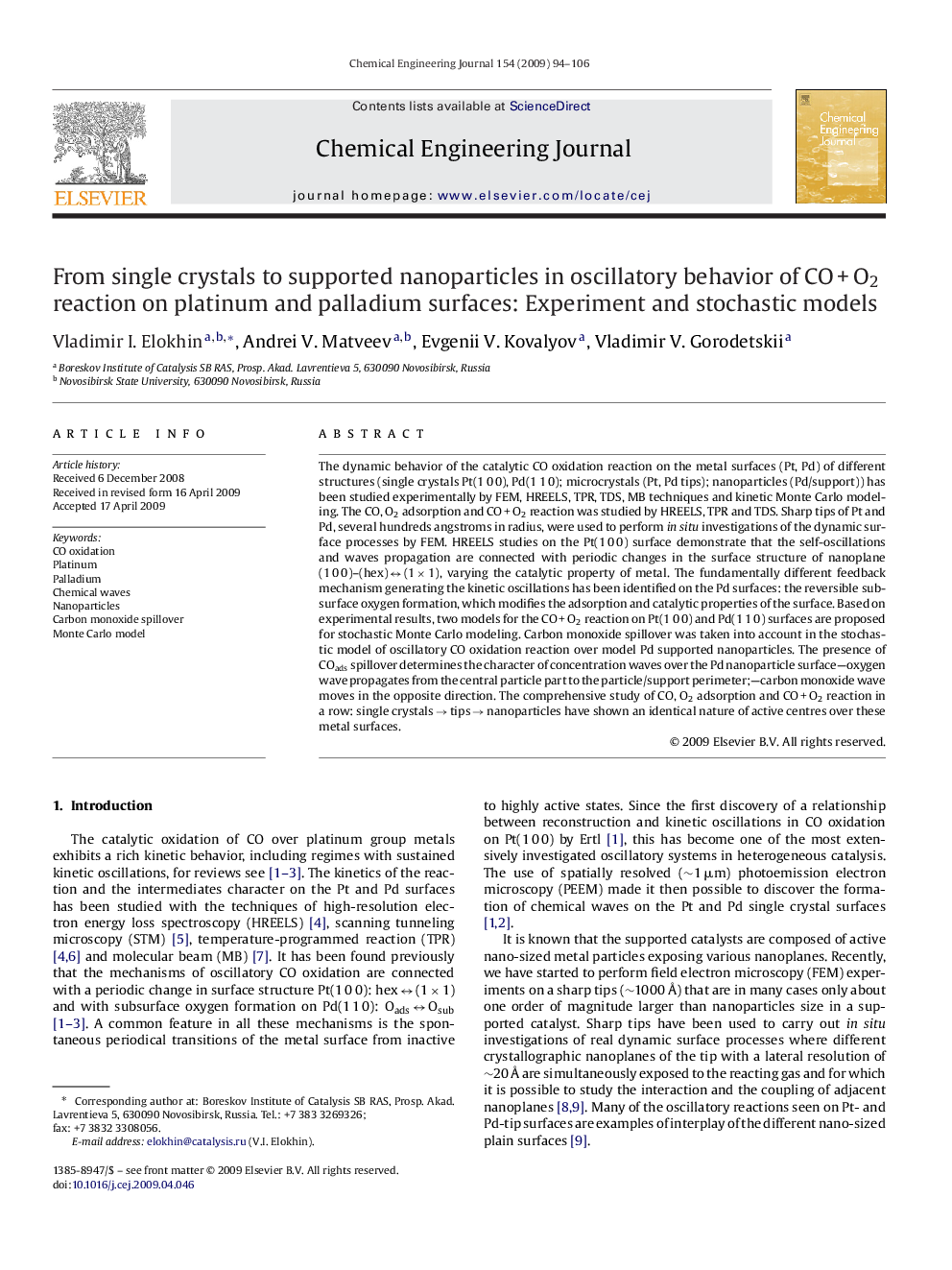| Article ID | Journal | Published Year | Pages | File Type |
|---|---|---|---|---|
| 153523 | Chemical Engineering Journal | 2009 | 13 Pages |
The dynamic behavior of the catalytic CO oxidation reaction on the metal surfaces (Pt, Pd) of different structures (single crystals Pt(1 0 0), Pd(1 1 0); microcrystals (Pt, Pd tips); nanoparticles (Pd/support)) has been studied experimentally by FEM, HREELS, TPR, TDS, MB techniques and kinetic Monte Carlo modeling. The CO, O2 adsorption and CO + O2 reaction was studied by HREELS, TPR and TDS. Sharp tips of Pt and Pd, several hundreds angstroms in radius, were used to perform in situ investigations of the dynamic surface processes by FEM. HREELS studies on the Pt(1 0 0) surface demonstrate that the self-oscillations and waves propagation are connected with periodic changes in the surface structure of nanoplane (1 0 0)–(hex) ↔ (1 × 1), varying the catalytic property of metal. The fundamentally different feedback mechanism generating the kinetic oscillations has been identified on the Pd surfaces: the reversible subsurface oxygen formation, which modifies the adsorption and catalytic properties of the surface. Based on experimental results, two models for the CO + O2 reaction on Pt(1 0 0) and Pd(1 1 0) surfaces are proposed for stochastic Monte Carlo modeling. Carbon monoxide spillover was taken into account in the stochastic model of oscillatory CO oxidation reaction over model Pd supported nanoparticles. The presence of COads spillover determines the character of concentration waves over the Pd nanoparticle surface—oxygen wave propagates from the central particle part to the particle/support perimeter;—carbon monoxide wave moves in the opposite direction. The comprehensive study of CO, O2 adsorption and CO + O2 reaction in a row: single crystals → tips → nanoparticles have shown an identical nature of active centres over these metal surfaces.
